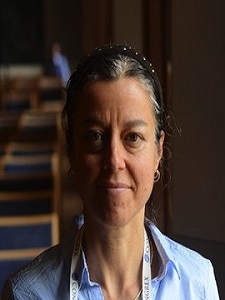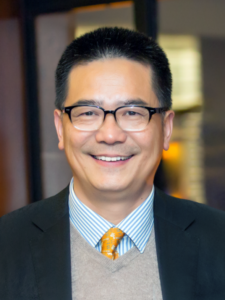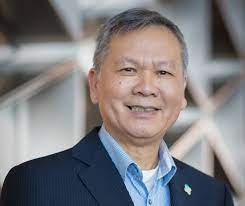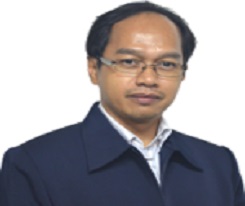PLENARY SPEAKER

Professor Simone Hochgreb
Head of Reacting Flows Group, University of Cambridge
Professor Hochgreb’s research investigates problems in energy conversion and reacting flows, with the aim of maximising efficiency and minimising harmful pollutant emissions. The main theme is to understand the physics of reacting flows in energy conversion devices, and the tradeoffs in stability, efficiency and emissions.
Many of the projects involve experimentation and analysis at realistic conditions, from which simpler experiments are defined: measurements in gas turbine injectors at high pressures and temperatures provided the questions for current experiments investigating how reactant stratification behaviour affects flame structure, emissions formation, ignition, behaviour and instability. Results of the work on flame instability and soot emissions have been used by partners in industry in developing new injectors, whilst the work on flame structure and instabilities continues to serve as a database for model verification. The work is inherently collaborative, developing and sharing tools, data and models across the world.
Past research includes work on chemical kinetics, autoignition and internal combustion engine performance and emissions. Current developments are focused on understanding the emergence and fate of hot (entropy) spots in combustion, leading to emissions and instabilities in model combustors, and developing accurate and non-intrusive methods for measurements of soot, coal, spray and fine particles in reacting flows.

Professor Wang Ruzhu
Director of Institute of Refrigeration and Cryogenics of Shanghai Jiao Tong University
Profesor Wang Ruzhu (R. Z. Wang), born in Dec.1964, graduated from Shanghai Jiao Tong University (SJTU) in 1984, 1987 and 1990 for his bachelor, master and PhD degrees. He was promoted as associate professor in 1992, full professor in 1994 at SJTU.
He has written 10 Books and about 600 co-authored international journal papers and more than 100 patents, his ISI h index is 72. He is a leading scientist in heat pumps, CCHPs, solar heating and cooling, and green building energy systems. He has won Chinese National Research Awards in 2010 and 2014 respectively. Prof. Wang received the J & E Hall International Gold Medal from the Institute of Refrigeration (UK) in 2013, Asia Refrigeration Academic Award in 2017, the Nukiyama Memorial Award from the Japanese Society of Heat Transfer in 2018, the IIR-Gustav Lorentzen Medal from the International Institute of Refrigeration in 2019. He was honored to be the Clarivate Highly Cited Researcher in 2017 and 2018 respectively.
He had been appointed as the director of Institute of Refrigeration and Cryogenics of SJTU since 1993. Currently he is also the Director- Engineering Research Center of Solar Energy, MOE China, Vice dean of SJTU Energy Institute. His research group has awarded as Excellent Innovative Team of Energy Research from MOST China in 2014 and NSFC in 2015.
Prof. Wang is currently the Deputy editor-in-chief of Energy, Regional editor-International Journal of Refrigeration.
INVITED SPEAKERS

Professor Kim Choon Ng
Water Desalination & Reuse Center (WDRC) of BESE Division of King Abdullah University of Science & Technology (KAUST)
Professor Ng’s research has been focusing on the heat and mass transfer of thermally-driven systems such as solar thermal plants, thermal-hydraulics of nuclear (PWR) plants, cooling machines or chillers, heat pumps. In 2000, he research focus is in the areas of solar engineering, heat pumps, cooling machines and adsorption thermodynamics for solid-vapor interactions where he pioneered the adsorption cycles for seawater desalination and cooling (ADC and MEDAD cycles). The unique features of the thermally-driven cycles are (i) its ability to utilize low temperature waste heat for regeneration of adsorbents such as silica gel, zeolite, activated carbon etc., (ii) its ability to handle high concentration feed in the cycle, (iii) it has almost no major moving parts which makes the cycles robust and low in maintenance (operational cost). The ADC can be synergetically integrated with proven thermal cycles such as the MED/MSF of the desalination industry, boosting the water production by more than 2 folds with the conversion of waste heat for the ADC to produce useful cooling and potable water. The combined or hybridized cycle, called the MEDAD cycle, has one of the lowest specific energy consumption for seawater desalination, less than US$0.5 /m3. His publication in the area of ADC has more than two hundred papers and it forms a major part of his citations in the recent years. His current research H-index (google scholar) is 61 with more than 11894 citations. Dr Ng is associate editors to 3 journals and a professional engineer (PE) in Singapore where he serves as a member of the examination committee of PE Board.

Dr. Agus Pamitran
Department of Mechanical Engineering Faculty of Engineering University of Indonesia
Dr. Agus S. Pamitran is a lecturer in the Department of Mechanical Engineering, Faculty of Engineering, Universitas Indonesia. His research has been focusing on heat transfer and pressure drop of two-phase flow, especially with natural refrigerants, in microchannel since 2002, and ice slurry generator since 2010. There were still manay areas that could be taken advantage of that would increase energy efficiency by improving the performance of heat transfer and fluid flow. Besides, the process used a natural refrigerant that was more enviromentally friendly. The observation of the two-phase flow boiling refrigerant in microchannel is including the characterization associated with the heat transfer coefficient, pressure drop, and flow pattern. The microchannel use could be beneficial since it increased the heat transfer coefficient; however, it also had a negative impact such as an increased pressure drop.
Sea-water ice slurry allow fisherman to obtain a smoother and even cooling medium to cover their fish. It will keep their fish and make their fish no risk of being damaged like what they experienced when using ice blocks. The temperature of ice slurry to be formed can be adjusted based on the salinity of the sea-water. The higher the salinity of the fluids is, the lower the formed ice slurry temperature will be. Therefore, the cooling media could be regulated in water with low salinity to keep the fish fresh dedicated to cunsumers who do not like frozen fish. In addition to cooling fish and other products, ice slurry is also used in a cooling system as a secondary refrigerant. In a cooling building using a cold storage, ice slurry can be used to reduce the initial investment cost of the cooling system.
Professor Haslinda Mohamed Kamar
School of Mechanical Engineering, Faculty of Engineering at Universiti Teknologi Malaysia
Ts. Dr. Haslinda Mohamed Kamar is an Associate Professor in the School of Mechanical Engineering, Faculty of Engineering at Universiti Teknologi Malaysia. She has been a faculty member since 1993. Currently, she is the Head of Air-Conditioning Engineering Research Group (ACER) and an Associate Chair (Quality and Strategy) of the School of Mechanical Engineering, UTM. She received her Bachelor’s Degree in Mechanical Engineering from the University of Glasgow, Scotland, in 1993, Master’s and Ph.D. from Universiti Teknologi Malaysia in 1997 and 2009, respectively. Her areas of interest include automotive air-conditioning, thermal comfort & energy efficiency in hot climates, indoor air quality (IAQ), natural ventilation as a passive cooling strategy in buildings, and Computational Fluid Dynamics (CFD) modeling and simulation.
